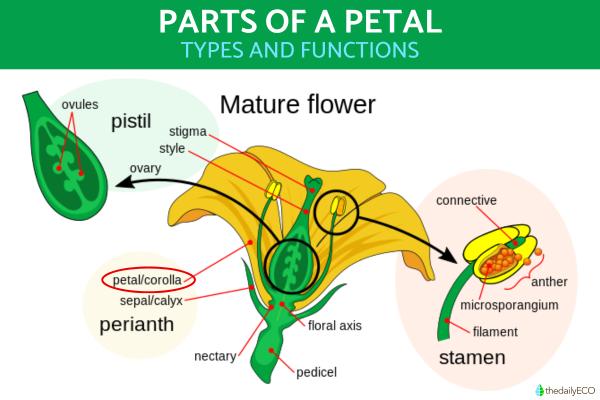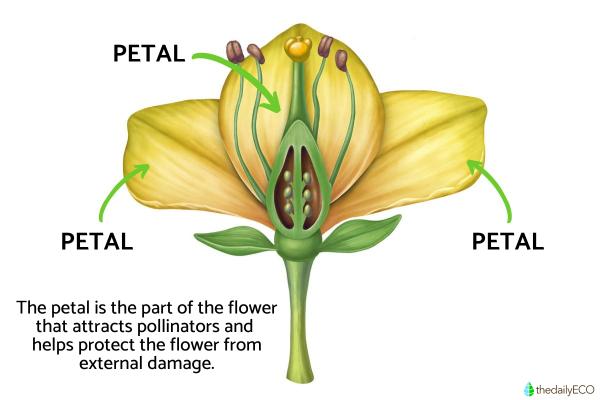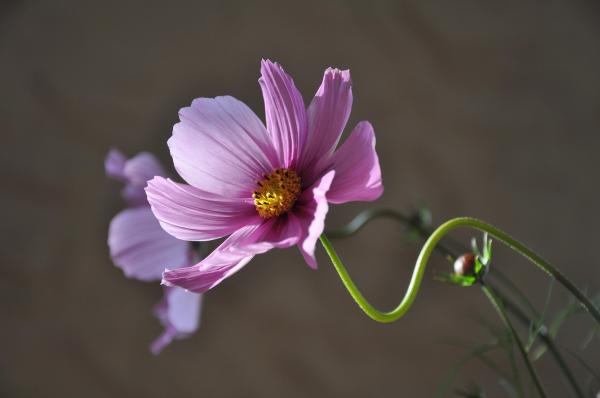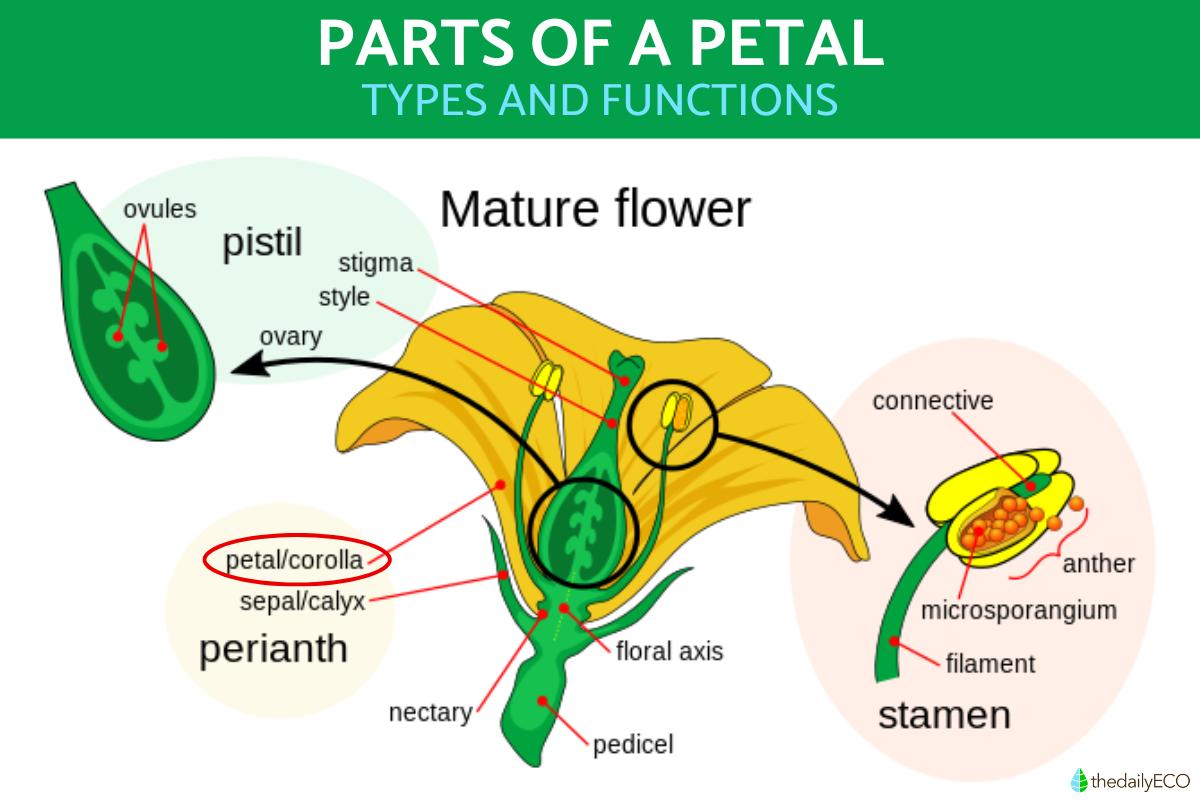Parts of a Petal and Their Functions


Due to their color, the petals of a plant are often the first thing we notice when looking at them. While they are a part of the flower and play a part in the plant's reproduction, they do not house any of the sexual organs themselves. This means their influence on plant reproduction is indirect. Evolutionary adaptation would not allow flowering plants to have petals without some important function. The importance of petals is related to the fact they attract attention. In addition to providing the plant with ornamental value for humans, this provides the key to knowing the function of petals in plants.
We learn more with thedailyECO as we explain the parts of a petal and their functions. We also provide diagrams so you can see how the petals relate to the other parts of a flower.
What are flower petals and their characteristics?
The petals are the part of the flower that most draw our attention. Depending on the species, they can range in colors and patterns. Some of them are incredibly intricate in shape and form, others have more basic structures. This has led many different species to be considered valuable ornamental plants.
However much humans may prize different plants for their flowers, they are important structures in a plant which are necessary for the survival of their species. This is because they help aid the sexual reproduction of plants.
The petal is the part of the flower that covers and forms the corolla. This structure can vary in shape, size and structure depending on the species. In this way, there is no uniform shape of a flower petal. They can differ greatly in terms of color, texture and even scent.
There are various different ways to classify flowers, including due to the type of petals they possess. In this way, we see the following different types of flowers according to the type of petal they display:
- Apetalous: flowers that have no petals or which have petals that are so small they are rendered redundant. They do not fulfill the functions of flower petals such as encouraging pollination.
- Dicotyledons: flowers with between four and five petals. Flowers with petals in multiples of four or five are also considered dicotyledonous.
- Monocotyledons: are flowers that have 3 petals or multiples of this number. The diagram below depicts a monocotyledon flower.

Parts of flower petals
Although petals may seem like simple organs, we can clearly differentiate their component parts. Not all petals necessarily have all the organs listed below. Each petal shape and component part depends more on the species.
The following are different parts of a petal which can be found in flowering plants, but they are not necessarily common to all of them:
- Limb: this is the enlarged part of the petal that protrudes from the flower. It provides the shape to the tip of the petal and is the most visible and eye-catching area, both due to its shape and color.
- Margin: this is the edge of the petal that can vary greatly in terms of shape, providing the overall structure to the petal.
- Epidermis: the outer part of both the upper and lower parts of the petal which is analogous to the exterior skin of animals.
- Lip: a thick structure that protrudes from the petal where pollinators can rest to extract nectar and facilitate pollination. It is only present in certain plant families that have developed this adaptation.
- Apex: the part of the petal that is located at the end of the tip and which can vary in shape, often being pointed, notched or rounded.
- Claw: this is a narrow area that forms from the base and joins with the rest of the structure that makes up the flower.
Even within the same classification, there are many varying types of plants. You can learn more with our article explaining what are annual flowering plants?
What are the functions of petals in a flower?
The main function of flower petals is to attract pollinating animals. The most important and common types of pollinating animals are insects such as bees. These insects land on the flowers to feed on nectar. Pollen from the stamens become attached to the insect which then transports it to other flowers for cross pollination. This activates reproduction and allows the survival of the species.
Flower petals often have striking shapes, scents and colors to attract pollinating animals. This is an evolutionary trait which encourages fertilization. The color of the petals provides a sign to these animals that they have delicious nectar which can be used for sustenance. It is these evolutionary traits which similarly make us so attracted to flower petals.
The petals can also serve the function of protecting the internal parts of the flower. The plant's reproductive organs are sensitive and vulnerable, so petals can provide much needed protection. Some plants even fold over their petals at times when pollination is unlikely, such as during the night. They reopen at dawn to restart the reproductive cycle.

Other parts of the flower
No we know the different parts of a petal and their functions, we need to know they only function as part of the whole. While they aid in pollination and fertilization, they would not be able to do so without the reproductive parts of the flower. These other flower parts include the following:
- Calyx: usually green in color, this structure is made up of sepals and is responsible for supporting and protecting the flower's petals and providing stability.
- Corolla: this is made of the flower petals as a collective and are the most striking part of the flower. They are usually very colorful to attract insects that will help the flowers reproduce through pollination. In most flowers, the corolla and calyx combine to constitute the perianth.
- Stamens: these are the male organ of the flower where pollen is produced. They are composed of the filament and the anther. The filament supports the stamen, making it easier to come in contact with pollinators. The anther is where the pollen is located.
- Pistil: right in the center of the flower is the female reproductive organ. This is where the ovaries, style and stigma of the flower are located, waiting to receive pollen for fertilization. The female reproductive parts are collectively known as the gynoecium of the flower.
In addition to the petals, these are the most important parts of the flower. To learn more about the anatomy of both flowering and non-flowering plants, you can take a look at our article on the parts of a plant and their functions.
If you want to read similar articles to Parts of a Petal and Their Functions, we recommend you visit our Biology category.







